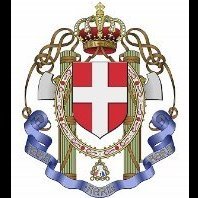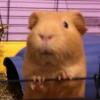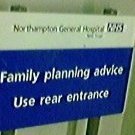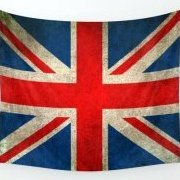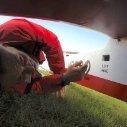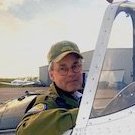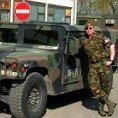Search the Community
Showing results for tags '1:32'.
-
I have to brag because I still have a brand new 1:32 scale SAAB J 29 B "Tunnan" from FLY 32023. FLY has released "Tunnan" in B and F versions and I managed to get both of them and both will be shown here. For this model FLY has also released masks to paint cabins (artm32011) and wheels (artm32014) which I also have. This is a quick in-box of the kit. I will do rest of in-boox pictures as soon as I have some time.
-
I have to brag because I have still new from FLY 32022 - SAAB J 29 F "Tunnan" in 1:32 scale. FLY has released "Tunnan" in B and F versions and I managed to get both of them and both will be shown here. For this model FLY has also released masks to paint cabins (artm32011) and wheels (artm32014) which I also have. This is a quick in-box of the kit. I will do rest of in-boox pictures as soon as I have some time.
-
This is my second entry for the group build, I fancied doing one of the classic 1:32 car kits. When I checked the list of Matchbox kits I thought about revisiting the Jaguar SS100 or Mercedes-Benz SSK that I built when I was young, but I fancied the idea of building one of the kits that hadn't yet been part of the group build. The two subjects that held the most appeal were the Rolls-Royce Phantom and the Citroen 11 Legere. In real life I like the Citroen as a technological pioneer and for the low, sleek lines (particularly as in the coupe and roadster modelled here). Here's the box art, I found this kit on eBay described as complete and as new. Overview of the sprues, which certainly seem to be in great condition. Most of the body parts are moulded in black. Red for the floor, interior and engine. Rubber tyres with "Michelin X" and size markings moulded into the sidewalls and a tread pattern (is it authentic?). Lots of chrome parts; some make sense (e.g. the bumpers) and some don't (e.g. the suspension parts). The worst element is the glazing, which is full of mould marks and distortion. I may try cutting new glass out of clear plastic sheet. The kit can be built either as a coupe or roaster and the box art gives some nice inspiration for alternate colour schemes. It is also tempting to assemble the kit just in its multicolour plastic glory. You even get the option of having the bonnet open and a rear dicky-seat. Here's a quick overview of the instructions, for a small and fairly old model it is quite complex and detailed. The multi-part body looks like it might be a challenge to assemble and paint. My current thoughts are to go for the roadster version (better to show off the interior and dashboard), in a light colour for the body, or maybe a two-tone. I'll have a look at pictures of real Traction Avant roadsters for inspiration. I don't build many 1:32 scale cars (or 1:32 anything) but this looks like a step up in quality and detail from the 1:32 Airfix car kits that I've built. I hope you'll enjoy the build journey with me.
- 65 replies
-
- 19
-

-
Sopwith 5F.1 Dolphin Wingnut Wings 1:32 Of the aircraft produced by the Sopwith Aviation Company, the majority such as the Tabloid, Baby, 1 ½ Strutter, Pup, Triplane, Camel, Snipe, and Salamander were all powered by rotary engines. Only the Dolphin and Cuckoo made it into wartime service with an in-line engine. The Dolphin using the same 200Hp Hispano-Suiza V8 fitted to the SE.5a and SPAD XIII, and the Cuckoo (although it was too late to see active service) used the Sunbeam Arab . The main design aim of the Dolphin was to give the pilot improved all round visibility, seating him close to the top wing, with a completely open centre section. The top wing was also negatively staggered (I.e. further back than the bottom wing) to assist with visibility. There are all sorts of complex aerodynamic features associated with negative stagger, suffice to say that it never became popular. Patchy reliability of the Hispano-Suiza engine notwithstanding, the Dolphin became a very good high altitude fighter and was favored by several aces, many of whom earned all their kills on it. Initial deliveries were at the end of 1917, with twin Vickers guns over the engine and twin Lewis guns pointing upwards in the centre section cutout, giving the Dolphin is classic aggressive look. In practice the drum fed Lewis guns intruded into an already cramped cockpit, so often only one was fitted and the weight saving also benefited performance. Comparatively few Squadrons were issued with the Dolphin, only 2 going to the RNAS and the rest to the RFC, although of course both services joined to become the Royal Air Force on April 1st 1918. Within three years of the Great War ending, the Dolphin was completely retired from RAF service, although a small number carried on with the Polish air force. Over many years the RAF museum gathered a large number of parts from several Dolphins, and today a beautiful restoration/replica can be seen at the Hendon museum. The kit. I bet few of us saw this one coming! It suddenly appeared on Wingnut Wings website in early December, just in time shoot straight to the top of every Great War aficionado’s Christmas List. Packed in one of Wingnut Wings standard silver edged boxes, the artwork features a 23 Sqn. Machine in combat with a Fokker Triplane high above the western front. Lifting the lid reveals three large sprues, one smaller sprue for the engine, one for the clear parts, an etched fret, a set of decals by Cartograf, and Wingnut Wings sublime instructions/reference booklet. A bonus is that you also get that buzzing feeling of excitement from opening a new Wingnuts kit! Sprue A. This holds all the smaller and detailed parts, with some superb moulding. Note how good the Lewis guns are, and the underseat box for storing the ammo drums. Also the fuel tank is a very impressive single part. Everything is sharply defined, with some very delicate detailing. The parts cover a lot of the interior fittings, as well as exterior components such as the undercarriage, struts, bombs, choice of propellers etc. There are a couple of wing mounted Lewis guns for option E, the 87 Sqn machine. Unusually for an aircraft of this period, the guns were mounted on the lower wing outboard of the propeller arc, and fired by cable. I don’t know how successful this was, but it must have limited the rounds that could be fired, as it would not have been possible to change the ammo drums in flight. Note that the centre section Lewis guns would have been omitted, this was an ‘either or’ option. The instrument panel has the usual compliment of super fine decals for the dials, all of which are readable under a magnifying glass. My references state that the panel itself was gloss black painted American pearwood, confirming the colouring instructions. Sprue B. Here we have the mainplanes, with separate ailerons. The lower wing is a full span single piece moulding incorporating a section of the lower fuselage. This has the twin advantage of making a strong unit and removing the need for you set the dihedral. The two upper wings are also single mouldings, with beautifully depicted fabric and rib tapes. All the wings have thoughtfully been given their sprue attachment points along the leading edge, thus eliminating any possibility if damaging the fine trailing edges when cutting from the sprue. This is another subtle example of how Wingnut Wings think of things from the modellers point of view, and why they stand ahead of all other manufacturers. The training edges are remarkably thin, perfectly capturing the look of the real thing. Sprue C. As well as the windshield, the clear panels for the pulley inspection covers on the wings are provided. Option B is a night fighter fitted with lamps on the wing tips, rudder, and fuselage, all of which are on this sprue. Sprue D. The Dolphins distinctively shaped fuselage is found on sprue D, along with the tailplanes, fin & rudder, cowling parts, and interior frames. The fuselage shows some really outstanding detail, with very stitching and fasteners. The interior frames are moulded with a lot of the metal brackets and copper piping on, and will look really spectacular when painted up. There is a fair bit of internal rigging to be applied using your favourite method, but all is illustrated clearly in the very comprehensive instructions. Every stage is clearly explained, and if you are not familiar with Wingnut Wings Instruction books, they are better described as reference manuals. Assembly sequences are clearly explained with CAD drawings, and period photographs showing the details of the real thing. The fin/rudder features really excellent rib tape detail. The early and late versions of the Dolphin had some subtle variations which are catered for on two sub sprues. The differences are in the tailskids, side radiators, and central cabane frame. The tailskid differences are that the early was wooden, and the late made from steel tube. This being a Wingnut Wings production you get both. Interestingly there is a late production front cowl(D8), marked as ‘not used’ on the sprue plan, and pointed out on a photo of the real thing on page 19, so at least we know that a further release of this kit is probably due in the future. Sprue E. This one has been seen before, in the SE.5a kit. Having previously made the SE.5a, I know that it builds up into a lovely little representation of the 200hp Hispano Suiza. The only difference is that the Dolphin had a different intake manifold & water tank unit, which is supplied on sprue A as part 22. The only thing you might want to add is some ignition wiring from the magnetos to the spark plugs. Etched brass. Lap type seat belts, gunsights, gun cocking levers, and a footstep surround are all supplied on here. There is also a removable nameplate with ‘Wingnut Wings’ logo and ‘Sopwith 5F.1 Dolphin’ etched on it. These present on all of Wingnut Wings etched frets if you wish to display a nameplate with your finished model. Decals. The sheet is printed by Cartograf, which pretty much guarantees the quality. Printing is sharp and flawless, the colours are excellent, and carrier film is minimal. Best of all is the mass of little stencils and instrument faces that add so much to Wingnut Wings finished kits. Sopwith liked to apply their company logo onto fittings like struts, and you get a full set of miniature ones here. These little items really catch your eye when looking at a finished kit, like when you notice that around the fuel filler opening it says ’Main Petrol 22 Gals’ in letters about 0.3mm tall. These little items really catch your eye when looking at a finished kit, like when you notice that around the fuel filler opening it says ’Main Petrol 22 Gals’ in letters about 0.3mm tall. Options. Option A. Sopwith 5F.1 Dolphin C3785, RNAS Dover, early 1918. Option B. Sopwith 5F.1 Dolphin C3803,”Red Star 6”, SARD, March 1918. Option C. Sopwith 5F.1 Dolphin C3824 “U”, JW Pearson (12 victories) & CE Walton (1? Victory), C Flight, 23 Sqn RAF, May to July 1918. Option D. Sopwith 5F.1 Dolphin C3879 “Q”, RB Bannerman, C Flight 79 Sqn RAF, August to November 1918 (17 victories). Option E. Sopwith 5F.1 Dolphin C8163 “A”, HJ Larkin, A Flight 87 Sqn RAF, August to November 1918 (11 victories). Conclusion. Another absolute beauty from Wingnut Wings, and one that has made many Great War enthusiasts very happy. The quality of the mouldings is absolutely top class with intricate and sharply defined components, fine surface details, and no flash or sink marks. As always, there are parts on the sprues that make me wonder ‘how do they do that?’ such as the Lewis drum ammo box (part A30) and the main petrol tank (part A20). I now take it for granted that fit will be faultless, as it always is on a Wingnuts kits, provided you keep paint off all mating surfaces. There is a moderate amount of rigging to be done, both internal and external, so I would place this one in the lower middle range for experience required. The view into the cockpit should be very good, revealing all that woodwork, copper piping, and instruments to advantage, and leaving the top cowl off will expose that lovely engine. With its pugnacious and aggressive look, the Dolphin is bound to find its way into most collections, and it makes the perfect companion for the Sopwith Camels released earlier this year. With Wingnut Wings producing the Pup, Triplane, Camel, Dolphin, and Snipe, all we need now is the 1 ½ Strutter to complete the line-up. Oh, and I’d quite like a Sopwith Baby too please! There can only be one verdict - Highly Recommended. Review sample courtesy of As an aside, there are few references on the Dolphin. However, there is one book which supplies virtually everything you could need. I got mine from 'Cross and Cockade' a few years back.
-
Greetings, hope you are all doing well! This is my latest completion, Hasegawa 1:32 Boeing P26 A Pea Shooter. This is quite an old kit, the plastic was hard and brittle, one yellow sprue was more like bakelite. I built this as part of a club build and put in a bit more work for this one. Quite a bit of work went into the cockpit. The instrument panel was replaced with a spare Kingfisher decal and I built up a front piece for it. The seat was replaced with my first attempt at vac forming and the rest of the cockpit was embellished with various bits and bobs. Typically when the fuselage was closed up you couldn't see a lot so here are a couple of WIP shots The back cushion was shaped out of miliput and lap straps were meant to be made from tape but found some Corsair ones which looked much better. I also added some cockpit placards to add a bit more interest. The gun barrels were replaced with brass tube. The kit comes with raised detail but I removed this as the joins while being not bad werent really good enough to keep the detail. The panel lines and rivet detail was then redone, using the rivet wheel for the first time (a second first!). All the paint work is from the airbrush with copious amounts of masking tape and ALOT of patience! The only decals were the badge behind the cockpit, the '23' and the 'US ARMY' on the under side. For the engine I replaced the push rods and exhaust/inlet piping with brass rod and some wiring harnesses added. There is a lot mentioned regarding the fit of the cowling around the engine so with this in mind I added a couple of thin slivers to widen the cowl. This worked really well and I didn't have to do too much faffing around in fitting out the cowl. It was still a right pain though and had to be done slowly. For the rigging I opted for rigid stainless wire, cant remember the size but it was quite fine. I think it is slightly over scale but it serves its use. The kit comes with all the rigging holes open so its a big invite to throw it in there. I did simplify the rigging between the spats as there is a bullet shaped fairing where the wires crossed. This just got far too complex so was left out! I think that's about it, quite pleased with how it turned out especially after that paint job! Thanks for looking in! Bob
- 10 replies
-
- 32
-

-
No, this build won't include Browning machine guns, rotating number plates or an ejector seat. This is more about refining some of the details of this venerable kit, and taking a trip down memory lane as it is another kit I built back in my early teens. I've been working on this in the background of my other builds for a few weeks. This is the box art, which I think is slightly different from the version I built the first time around. I knew that the biggest issue would be the body, with a mix of flash and sink marks to correct. Here is the body straight out of the box and you might spot a little flash if you look carefully. What I wasn't expecting was the panel lines, I'm not sure if they were originally designed as raised edges or recesses, but over the years they have become both and neither at the same time. I decided I'd take the risk to try and scribe the panel lines myself. The front end is where the worst sink marks are found, and the bonnet scoop needs opening up. At the back Airfix simply didn't bother with half the boot shut line. Careful work with scriber and razor saw, I've tried to get the lines as steady as possible but they may be a little wobbly in places. Creating the bonnet panel gap was really tricky. The passenger side. Boot panel gap added, Not sure how accurate it is, but it's better than nothing. To try and get the tail lights fitting properly they were added to the body before any paint so that I could make good with filler. I've also had to scribe the fuel filler door. Front valance fitted and checking that the chassis fits. Pity about the gap at the edge of the floor, not sure there's much can be done with that. Starting to open up the bonnet vent. And cut open. Great gobs of filler! More filler on the valance. First coat of primer, just to see what further correction is necessary. Not quite sure about that face. Driver's side. At least the door gaps don't look too bad. Even the boot gap doesn't look too awful. Something I knew I'd need to address would be the kit wheels. As with the Airfix Jaguar E-type I built last summer I decided to go for some slot car wire wheels. First mock-up with the wheels just plonked in the arches. One handy thing is that you don't have to cut away any of the chassis to fit these wheels, the boss sticks out pretty much the same distance as the boss on the kit wheels. Sitting on the suspension, it looks better at something closer to the proper ride height. The suspension is not too badly represented, the rear assembly is quite fiddly with its separate coil springs and radius rods. It's probably not going to get much more than a quick spray with black paint. Plenty of rubbing down has happened (and camera lens was cleaned). That window line isn't right and needs improvement. That looks a bit more like the correct shape. Underside primed and rubbed down, Those stub axles need to be a little thicker for the wheels to sit better. Something else I noticed was the complete lack of detail for the sides of the interior, I'm not sure how much detail I'll add but I felt that some sort of representation would be better than nothing. You also get a weird gap where the rear seats and wheel arches don't quite meet. Adding some styrene to correct the gap, yes it needs trimming down. To keep this build well away from the best-known DB5 it isn't going to be silver or anything close. it will be burgundy with a black interior. I'm not usually a fan of black interiors but it feels right for this sort of Aston.
- 59 replies
-
- 14
-

-
The re-issued Airfix kit A most enjoyable build.
-
Kit - Revell Paint - All Tamiya acrylics. Decals - Kit & HAD Extras - Yahu pre-painted IP, Eduard pre-painted harness. Various wiring, junction boxes etc from scratch. Been a couple of years since my last 1:32 build (a Trumpeter 109E), no particular reason just other shiny things grabbed my attention. Not going in to any detail at all about the history of this particular machine, it's very well documented, as for the build, erm.. it's a 'Curates Egg' of a kit - good points: well the undercarriage bays and gear detail are superb enough to keep most folks happy, but I added all sorts of wiring and junction boxes up inside which may never be seen but I know they're there. The cockpit is very good and didn't really need the Yahu IP that I added, purely because sausage fingers and middle-aged eyesight mean I can't get that sharpness that I once did by hand-painting. I expected the fit of the engine nacelles to be utterly horrid but I'm pleased to report that on my kit at least they were pretty close to perfect. Kit decals were put to one side except for all the stencils which worked fine for me. I'm not a fan of RoG Instructions but these were OK with only the one blunder which most builders will have heard about so not going to repeat it here. Bad points:- It may have been just my kit but I spent a shed-load of time, effort and putty blending the various nose sections together, the fit was very '1980's' if you get what I mean, most of the reviews out there don't mention this, but then most are of the earlier two-seater kit so maybe there's a difference in QC. The underside join between the front of the lower wing and forward fuselage still isn't right to my eye, but I was running out of patience at that point - so I admit to getting it to 'that'll do' as opposed to 'yeah that's spot-on'. Paint is all Tamiya acrylics mixed using the Mk.I eyeball method, aircraft specific decals are HAD, first time using this company and the quality, opacity and adhesion is simply astonishing. So that's it, there's a few 'user errors' in the build including having to scratch-build a new slat as the carpet monster got a hold of one, also I thinned the undercarriage pegs a little too much so it's prone to wobbling on it's legs, but I really like it, and it has a shed-load of presence sitting in my cabinet. Please feel free to ask any questions, make any comments or criticism. All the best from NZ. Ian.
- 15 replies
-
- 57
-

-

-
I fancied something that might be a quick build and also wanted to see what a modern AIrfix car kit was like. I also wanted a few 1:32 companions for my Airfix E-type, I've got a DB5 in my stash but didn't fancy attacking lots of flash and poor quality mouldings. I'm not looking forward to tackling the decals, which is something that always puts me off racing car kits. Despite being a simple kit the box seems to be packed tight with pieces. Perhaps packed a little too tight, there's a bit of distortion to the windscreen pillar. Some good, clear instructions including a colourful paint and decal guide. Nice mouldings although it's a pity the kit doesn't run to rubber tyres. Colour choice, this Ford light blue looks like a reasonable match, good enough for me anyway. A few ejector pin marks to clean although a coat of black paint will hide a multitude of sins. Windscreen pillar straightened up, but there's also a mould line to smooth. Some smaller parts that also need body colour, including the centre part of the tail lights. First primer coat showed that my cleanup wasn't quite good enough. I also sprayed primer on a spoon, just to see how the paint would go before painting the car.
- 51 replies
-
- 4
-

-
- Airfix
- Aston Martin
-
(and 1 more)
Tagged with:
-
I'm starting this build thread as a tribute to my Uncle, Sgt P C Brown.(later promoted to W/O 2 ) I only recently found out some detailed information about his wartime RAF service. The key to unlock the records was his middle name. I found his record card in the National Archives after my late father told me his middle name was "CORIN". This build thread i've decided to start up as a WIP. It's the Revell 1:32 Hawker Typhoon V kit. The reason I chose this was that my uncle flew this type in March/April 1945 in Northern Germany. I'm intending to use the Hataka Paints set for RAF. Have tried these out on a Boulton Paul Defiant and a Tamiya Mosquito to learn how to apply the RAF Temperate cammo scheme with an airbrush. A little about my uncle... I knew a few details about his RAF service during the war. It was only very recently that i actually discovered some more of the story from official documents. I'd been trying to find out something more about him for many years. The key piece of information was his middle name. My late father told me a few months before he died that Uncle Peter's "C" in his name was "Corin". This was the key that unlocked his service number and eventually his complete squadron operations book, held in the National Archives . I decided i would build the kit as one of the squadron aircraft that he flew the last operational sortie before the wars end. I can determine that he flew 11 sorties with 56 (Punjab) Squadron flying from Volkel in Holland. On his very first sortie he destroyed a FW-190 D of JG 26 . On his 11th sortie he suffered total engine failure and crashed in to a wood, the plane exploding, and was assumed killed. It is this aircraft I plan to depict. US-X / serial number - NV728 .W/O W DM Tuck suffered engine failure on the same sweep and he believed that both himself and Peter Brown were hit by small arms fire on a Low level strafe damaging their cooling system and leading to both engines seize ups. Chris Thomas interviewed Bill Tuck and this was the story he related. I have not discovered what happened after he crashed exactly yet. He was held as a POW and was reunited with Bill Tuck in a camp of sorts. I do know he's mentioned as back in the squadron in August 1945. He was still in Germany in October 1946.I should find out these details from his MOD full service record once i get them! I've applied through the correct channels but the MOD have told me this may take up to 6 months due to Covid. For this build i think it's not necessary as the aircraft depicted i can place with uncle Peter on 3rd April 1945 with 56 Squadron. I have bought the kit, some Master brass gun parts/pitot tube and a full set of the correct decals so i can depict his aircraft. I have managed to get some actual pics of my uncle at the time. He joined the RAF sometime in September 1942. He went to Canada under the 'The Big Plan' to learn to fly between 10th August 1943 and 26th November 1944. January 1945 he was at an OTU in Yourshire and on the 19th March1945 he was with 56 Squadron in Holland. I'm doing this build as a tribute to my Uncle Peter. Here's some pics of him and the reference material i intend using! Sgt Peter Brown with 56 Squadron Tempest V ( unknown aircraft ) Sgt Peter Brown - Front foreground Right - With the 'chaps' at dispersal - 56 Squadron - Germany 1945? e Sgt Peter Brown sitting on a Hurricane wing. Date/Place unknown. The Aircraft nose art says "81 - Jean" He named one of his daughters "Jean" Peter Brown in a Hurricane cockpit . Found this Profile online . Same squadron, different aircraft but at crucially the right time so will consider this as my primary colour reference.
- 375 replies
-
- 22
-

-
- Revell
- Hawker Tempest V
-
(and 1 more)
Tagged with:
-
This was just meant to be a cheap fill in whilst waiting for the Mi-17 to arrive but actually was quite a nice build in the end. The fit of some parts was as you would expect from a 1982(or possibly earlier, Scalemates say 1972!) model whereby it fitted where it touched! But other bits went together nicely. Detail is a bit sparse and there are lots of inaccuracies for an in-service aircraft but if you look past that then for 30€ you can't really complain. The decals were OK but the large roundels on the intakes had to be sliced into sections to get them to mould to the shape even with Micro-wotsit... I added a few details here and there, most of which can't be seen(!) but it was good practice. I must say I'm quite taken with this bigger scale but it does take up a lot of shelf space! Here's the WIP... Most of these pics were taken before I added the matt clear coat, but the ones I took after are even worse quality than these😜 Oh, and I was going to add the anemometer thingy in front of the canopy...but I broke it getting it off the sprue😬
- 14 replies
-
- 25
-

-
Someone implied that I must be a glutton for punishment taking on these Airfix car kits and there may be a grain of truth in that assertion. While I was waiting for the filler to set on my Aston Martin DB5 build I thought I'd have a look at the Airfix Maserati Indy that's been on my shelf for a few weeks. It's a starter set, but I'm not sure I'll bother with the paint or glue although the brushes might be useful. Slightly inaccurate paint guide on the back, the sills on every Indy I've seen are finished in stainless steel so should at least be painted silver. The two largest parts are the upper and lower halves of the body, which on first inspection are quite nicely moulded. The lower part of the body, thanks to it's shape, feels impressively stiff (not sure why that impresses me as it's of no practical value to the kit). However, the first dry fit suggests that this might be a bit more of a challenge than it first looks. More to come soon.
-
Having recently finished the Mig-29, I was looking for something different and a little bigger. After a lot of deliberation I settled on the Trumpeter 1:35 Mi-17 and promptly ordered one before Easter...By Friday all I'd heard was that the order would be shipped when it was complete, which I took to mean they didn't actually have it in stock! The weekend was looking dire weather wise so I was going to go stir crazy with nothing to work on🤨 A lot of model shops shut at 1300 on Saturdays in Germany, but there's a shop in our nearest city(Trier) so having persuaded the missus we needed a couple of hours out we headed over. They're basically a toy shop but do have a reasonable modelling and railway section. I was only really looking for something to keep me busy for a few days and their stock mainly consists of Revell mainstream kits and some Tamiya 1:35 tanks etc. As I'm on a budget due to no guaranteed summer work and very little winter work, 150€ for some of the big kits was a bit much, and even 50-60€ seemed a bit steep for a fill-in project. I then noticed a huge box with a Harrier on it for 30€...A quick look on Scalemates told me it was a very old kit (1972!!) so it was going to be a challenge, but it was cheap😜 You'd think I'd have learnt my lesson with the MiG, but no...🙃 Anyway I bought it, looked in the box and a few swear words passed my lips as I saw how much detail there wasn't...I then started doing some research and thought I might be able to do something with it, after all it was cheap...
-
I started this build in August last year but my enthusiasm started to wane due to difficulties with the build. But I felt I ought to complete this build as I don't like to give up. Why this kit? This was chosen because I wanted to see what a new Airfix car kit was like and to try something outside of my comfort zone, i.e. a racing car with lots of decals. Why the loss of enthusiasm? Unfortunately this was the flip-side of choosing a subject outside my normal sphere of interest; I'm not that into racing cars and definitely not relatively recent cars like this. Is it any good? On the whole, yes. It's reasonably well moulded, not too much flash and nicely detailed. What's wrong with it? The biggest issue is the front bumper and the way the body attaches to the chassis. It doesn't help that the instructions call for the bumper to be glued to the chassis before the body goes on. It would probably work better to glue the bumper to the body first, that way you could do most of the decals and clear coat the body before it goes on to the chassis. How were the decals? A nightmare, the one for the front grille is particularly tricky. It's taken a lot of setting solution to try and get it to conform to the shape of the body. Getting the two parts of the stripe to join up and lie flat nearly broke me. The rear stripe isn't great either. What do you like? This is probably my favourite view. Anything else? I've not even mentioned the fun I had with the wheels, which are moulded integrally with the tyres and are a pain to mask. Despite all the moaning above, it is still a model I'm pleased to put on display. from a distance it doesn't look too bad and it is now part of my modelling journey. If you've not seen it, the build thread is here:
- 22 replies
-
- 25
-

-

-
This is a bit later than I hoped, because I was having problems with my photo hosting service. The idea was to build the kit just using the supplied paint, brushes and glue (plus a few basic tools) in the Airfix starter set, which is something Airfix itself promotes as the Starter Set Challenge. Pure adherence to the challenge lasted about as long as it took to apply the thick, toothpaste-like gloop that masquerades as white paint. The model itself is really sweet, I'm not the biggest Triumph Herald fan but there is something about the kit that just made me smile. Most of the details are done with the standard kit paint, hence the silver paint clogging the grille (despite using a pin to try and open up the holes. Also there was no orange paint for the indicators. Also note that the person who produced the number plate decals had no idea about the correct size, letter type or the fact that (IIRC) Z wasn't commonly used on mainland British plates. You do get a reasonable level of under bonnet detail although the wheels and the hub caps in particular are nothing like the ones Triumph fitted (which are shown on the box art). Paint was Tamiy Racing Red and Halfords Appliance White. The bonnet fit isn't great and I wonder if the windscreen is a bit too shallow? Because there is no clear red or orange supplied I had to make do for the tail lamps, when viewed directly from behind the use of red paint on the back of the clear part is quite convincing although it is less so when seen from the side. Detail on the underside isn't bad, but you can see how the back axle doesn't quite line up properly. Overall this was a fun build and I'm happy with the results given the self-imposed constraints. It was also probably the quickest build I've completed in a while, taking about a week from start to finish. Not quite as speedy as the good old days where you'd buy one of these as a weekend project that you start on a Saturday morning and finish by Sunday teatime, but the models I produced back then were seldom as good either. Of the AIrfix car kits I've worked on, this is probably my favourite to date, although the Maserati Indy may turn out to be better. This is certainly the first Airfix starter set that I would actually recommend to a novice modeller although I would advise them to invest in some decent paint.
-
A week into the GB and I've finished deliberating about which of my numerous fails will get another chance. What I really need is a KUTA of KUTA GB😬. I've dragged out the Matchbox Spitfire First started in the &5th anniversary GB and being in memory of my Dad it's a long overdue commemoration. AND it was a Christmas present from my children many years ago, so that should add up to KUTA enough and this time I'm really going to do it! Be that as it may, my resolve is flagging already; I'd forgotten just how much of a child of its time the moulds are- at least the sink marks on the bottom of the fuselage are symmetrical. So, it's going to be a very basic out of the box build as the many defects in this kit are listed elsewhere and there's better modellers than me spent a lot of time to correct those. Next is the inevitable head-scratching trying to work out what I'd done and why and just how much of it was necessary! As dad was a mechanic rather than a pilot I'll probably leave all the hatches etc open to show what he worked with plus it'll save the problem later of how many of those same hatches don't fit. Per ardu ad astra, I'm going to do it!!
-
Hi folks, Firstly - I'm aware of the great build threads (with fix observations) that have been posted here on BM - the some excellent thoughts and input - you there Bill? What I'd like to get together here is a definitive list of errors - with dimensional/photographic proof. So - looking out for theories/physical measurements/photographic evidence... Reason - I *really* love the Lightning and I doubt we'll ever get another in 1:32. And IMHO there is a lot that's good - we've got injection moulded 1:32 Lightnings for one! Sooo - am looking at making up some 'correction' patterns for these kits - possibly... What I have on the list at present is: Fuselage plug (5 mm to fuselage length) - This is something I will be double checking with a real airframe. Nose ring Intake/nose gear bay Replacement fuselage tanks (all versions) Fuselage cable ducts (as required per Mk) Rear fuselage cross section Possible narrow chord on fin (F2A/F6) Canopy - I have a gut feeling looking at a few completed models that the canopy is somehow wrong - gut feeling is far too wide - again - to be confirmed Wheels/Refuelling probe available elsewhere and main gear can be shortened. Anything missing from list? Any further observations? Iain
-
OK, so here's my entry. I have to admit she's probably the biggest thing I've built since my RC days so we'll see how she goes!!
- 58 replies
-
- 12
-

-
Fokker D.VII (OAW) Seven Swabians 1:32 Wingnut Wings Got a week off work so plenty of time to pull a 'big' build out of the stash and make a decent start. I've been itching to do the Wingnut Wings Fokker D.VII (OAW) for a while now, but had a massive problem in that I could not decide on which colour scheme to finish it in. It is a problem in a good way, because there are so many really attractive ones to choose from. For sure I want to do 3 OAW versions, Franz Buchner's and Willhelm Leusch's...... ...and the 'Seven Swabians' from Wingnut Wings own 'aftermarket' decal sets. I knew that if I chose just 1 of these schemes and stared the kit, I would regret not choosing one of the other 2! I solved this problem by dipping my hands deep into my pockets and ordering 2 more of the OAW kits. 'A modellers got to do what a modellers got to do' and I can't get enough of Fokker D.VII's. Anyway, good progress has been made, and this week has reminded me why I enjoy Wingnut Wings kits so much. This has been pure modelling pleasure, such a beautifully engineered kit. All this is out of the box, apart from the stretched sprue bracing wires & control runs, plus the ignition leads on the engine from black and yellow twisted thread soaked in white glue. Cockpit & engine bay; Daimler-Mercedes 200hp D.IIIau engine; Engine & Prop in place; In one fuslage half. Note the 'faded interior' side of the external lozenge fabric. Although this aircraft has a painted pale grey fuselage, it was delivered in lozenge fabric which was the overpainted on the outside. Wings will be covered with lozenge decals, but I have undercoated these with sutable base colours. A painted finish is essential to give the decals something to bite on to. The 3 builders of the D.VII (Fokker, Albatros, & OAW) all had their own distinctive cowling panels. I've prepared the OAW specific ones, and airbushed the insides with Citadel 'Runefang steel'. Next stage is to zip up the fuselage. Thanks for looking, John
-
Good day to you all from glorious Nova Scotia! Hope you are all doing well. This is my latest release, built as part of the Corsair GB which finished last month. Although I did manage to get it up in the gallery, it wasn't 100% finished so here she is in her (technically!!) finished glory. This is the Tamiya 1:32 Birdcage kit, done up as a Fleet Air Arm Corsair Mk I JT190 of 1837 NAS, based on the Eastern board of the US. This particular aircraft belonged to Squadron CO and Fighter Ace Lt Cdr Jackie Sewell DSC RNVR. Ultimately the aircraft claimed his life during a training flight when he collided with his Senior Pilot S Lt David Watson RNVR in JT198 over Yarmouth, Maine. Both pilots lost their lives and they both now lie at rest at the Military Cemetery in Portsmouth, New Hampshire. The kit was built more or less from the box, I added some fabric harnesses as they looked better than Tamiyas steel versions which aren't very flexible. I also added some cockpit stencils to add a bit of realism and interest to the standard cockpit. Points to note on the aircraft. JT190 didn't have clipped wings as it was a US based training aircraft, it also retained US harnesses and didn't have the rear view windows common in most Birdcage Corsairs. The aircraft is displayed having been pushed back for maintenance hence the tail wheel is meant to be reversed! The engine is a thing of beauty and really should be displayed so left the cowlings removeable. I added some ignition harnesses to the engine from wire. The insignia markings are painted, which was a great journey of discovery! The Royal Navy JT190 was from Xtradecal and I used the kit stencils. The internal paints were Mig Ammo, external were Vallejo for the sky, Model Master Gunship Grey from the EDSG and my own mix of Olive and Green for the Slate Grey. I used very fine thread for the aerials (if you can see them!). I think the weathering is slightly heavy but I am claiming artistic license for that! I also took liberties with the flaps which by rights should be stowed and the cowling flaps are closed where they should be open but the detail looked too complex and time consuming for this build! All that is remaining is the tape for the gun ports and also on the nose cowling there should be some sealing tape but I couldn't decipher the exact layout so left this out This kit was a truly wonderful build, the parts just fell together and the joins were nice and tight. In fact id anything didn't fit right it was down to me not fixing it in properly! If you want to follow along the build the link is below. Now the pics! JT190 in glorious technicolour (with a backward tailwheel!) And finally the Lt Cdr Jackie Sewell who inspired this build, RIP. Bob
-
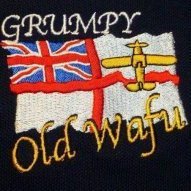
Corsair MK1 JT190 1837 NAS - Jackie Sewell
moaning dolphin posted a topic in Vought F4U Corsair STGB
Good day all, hope you are all safe and sound where ever you are. I'm just setting up my page for this GB. Really looking forward to this build and I have chosen Tamiya's epic 1:32 kit of the Birdcage Corsair. I came across the kit just after Christmas and was really looking forward to a later mark as I wanted to do a MkII but due the stock having a great price this was the last remaining and I couldn't turn it down, it worked out at around 60 quid! Now I prefer to model Fleet Air Arm aircraft and they did operate this type of aircraft as a MK I, it never really saw much operational action as it was mainly used as a trainer and was stationed mainly stateside and Canada. This particular build will be of JT190 which was flown by the late Lt Cdr Jack Sewell a FAA Fighter Ace, based at NAS Brunswick in Maine. I still have much to learn about the pilot and aircraft and will hopefully share that over the course of this build. The kit is quite huge and there is a lot of detail in there. Its the first time I've really tackled something in 1:32 so I hope that I can do it justice. I'm building straight out of the box with the exception of a fabric harness (I am assuming that the Mk I's still retained their American harnesses as they were based in US and hadn't really been British-ised yet), I also ordered a set of cockpit label decals to add a bit more depth to the cockpit, they haven't arrived yet so hoping they are not far off. As for the decals, well I haven't had any luck in getting a set in 1:32 so another first for me is painting the markings as opposed to sticking them on, we shall see how that goes! I do have a 1:48 'Royal Navy' and serial letters that work out to roughly the correct size so the serials wont be a problem. Just need to find some colour matching for the roundels. This aircraft was also marked up as '7M' and that will be slightly easier to mask and paint as opposed to any other number/letter combo. Here is the obligatory box top I wont go into every sprue shot as there are a lot of them and this kit has been well reviewed elsewhere on the web so I will save my Flickr size but heres a little selection of parts post washing, there are a fair few to count! It all looks a little daunting at the moment, I just hope I can complete it in time and do it justice, but we shall see. Until later, stay safe! Bob- 74 replies
-
- 13
-

-
Here it is, some fancy photos of my Airfix 1:32 Jaguar E-Type Open Two Seater. I was going to build it as it came from the box but had to change the wheels and add a few extra details. The colour scheme is inspired by Jaguar E-Type registration 77RW, which is the first OTS E-Type although this isn't quite an exact replica. Added bits are: Mitoos Classic treaded 20x6mm tyres and 16.5x6mm wire wheels supplied by Pendle Slot Racing (very happy with their customer service). Nickel silver wire gear lever, hand brake lever, windscreen stay and windscreen wipers. Plus a rear-view mirror from a bit of sprue and a whole lot of styrene sheet underneath to close off the under bonnet area and cabin. Link to the WIP thread here. This it the first build that I've both started and finished since joining the forum. Enough chat, enjoy some photos. The backdrop for some of the photos is a picture of the British Motor Museum Collections Centre taken from the builder's website and the car is sitting on a sheet of wet and dry paper as the roadway.
- 26 replies
-
- 18
-

-

-
I was given this kit today by my team at work as an early birthday present. It was such a lovely and thoughtful gesture that, despite vowing not to start another build until I'd completed one that I'd already got in progress, I've decided to make it a project to get it built in the course of my week off next week. I'm sure the Airfix Jaguar E-type Open Two Seater needs no introduction. I built one of these in my adolescence and so I'm quite keen to go back and have another bash at it. It seems somehow appropriate that the bits come in a plastic bag, even if they are contained within a cardboard box. Limited set of decals but they look pretty nice. And the parts themselves, very much a case of "flash! Aaargh!" As recommended by the instructions, I've given the parts a wash in warm, soapy water. I'll leave them to dry overnight before attempting to start the build properly. I'm not quite sure how to tackle this build as you can't assemble the body without also assembling most of the interior and suspension. The various parts of the body don't seem to mate terribly well, so it's going to be a challenge to get it all together to paint. I'll probably use an airbrush rather than spray cans and I think I'll go for green, rather than the red finish that the box art suggests.
-
Now that my 1:48 Hasegawa is well underway and approaching the final paint stage (primer is on, preparing the front cowling and spinner to have their colors), and I enjoyed this kit so much, I decided to add a larger scale Pony to my collection: the 1:32 Zoukei-Mura P51-D . An awesome kit with full interior. It really screams to be build. Ordered extra wheels, barrels and seatbelts. There are other sets available, but these together will more than double the kit price, so I will mak do with what is in the box and the 3 add ons. I hope I can finish it before the group build ends... Oh well, I'll see.
- 40 replies
-
- 7
-

-
- Zoukei-Mura
- 1:32
-
(and 1 more)
Tagged with:
-
Hello folks Been a long time since I asked for folks ideas here, but because I’m planning-on building the Tamiya 1:32 Mustang (and the implied ‘cost’ of this kit), I thought it may be a good idea to get some thoughts before I start hacking away at it. I’m going to build Bill Dunhams’ ‘Mrs. Bonnie’ as it was right at the end of the war in summer 1945. The aircraft is a P-51K-10 it's quite well known as it was featured in some publicity photos in August or September. As you can see, despite it being a Dallas-built ‘K’ it has the cuffed Hamilton props and spinner – the blade profile and decals give-it-away – also the whole of the spinner is painted red/yellow/blue & black (front to rear). This is fine as the kit I’m using is the initial Tamiya release, 60322 (which also has the ‘Dallas’ canopy in the box too). Now here’s the part where I need your insight & thoughts – Tamiya in their paint & decal instructions show ‘Mrs Bonnie’ with the ‘correct’ Aeroproducts spinner & blades but also would have you paint the spinner back-plate NMF, the colours being the same but compressed. Has anyone got a photo that confirms the Tamiya instructions – just being curious, I’m one of those folks who likes to have as much info as possible… Thanks in advance folks, over to you. Ian.

